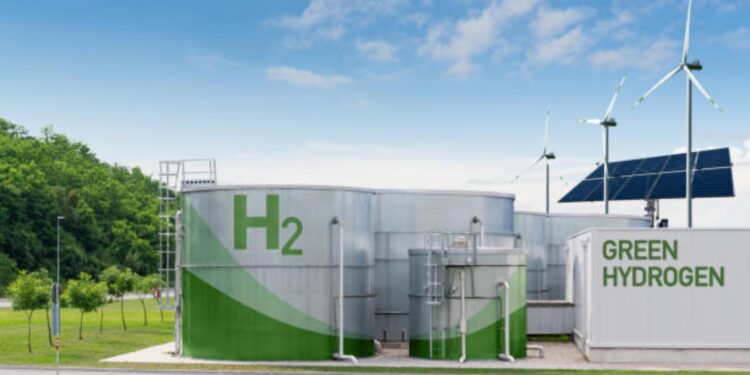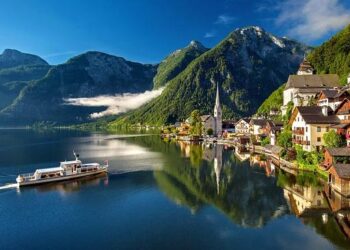Austria has announced a major investment of Ōé¼275 million to accelerate the development of green hydrogen technologies, positioning itself as a future hub for the European Union’s hydrogen economy. The ambitious funding initiative aims to support renewable energy projects, infrastructure development, and innovative research, underscoring Austria’s commitment to achieving its climate goals and fostering sustainable economic growth. This strategic move aligns with broader EU efforts to reduce carbon emissions and transition towards cleaner energy sources, marking a significant step in the continent’s race to lead in green hydrogen production and utilization.
Austria Commits Major Funding to Accelerate Green Hydrogen Development
Austria is making a decisive leap toward a sustainable energy future by allocating Ōé¼275 million to catalyze the green hydrogen sector’s growth. This strategic investment is designed to foster innovation, bolster production capabilities, and establish Austria as a key player within the European hydrogen economy. The funding will primarily support projects focusing on renewable energy-powered electrolyzers, infrastructure expansion, and cross-border hydrogen integration networks that align with the European Green Deal’s ambitious climate targets.
The comprehensive funding plan includes:
- Development of large-scale hydrogen production facilities using solar and wind resources
- Enhancement of hydrogen storage and distribution infrastructure to ensure supply reliability
- Support for research and development initiatives targeting cost reduction and efficiency improvements
- Collaboration frameworks with neighboring EU countries to position Austria as a regional green hydrogen hub
| Project Focus | Allocated Budget (Ōé¼M) | Expected Completion |
|---|---|---|
| Electrolyzer Scaling | 110 | 2027 |
| Infrastructure Expansion | 85 | 2026 |
| R&D and Innovation | 45 | 2025 |
| International Partnerships | 35 | 2024 |
Strategic Plan Positions Austria as a Central European Green Hydrogen Hub
Austria’s commitment to investing Ōé¼275 million in green hydrogen underscores its ambition to become the pivotal player in Central Europe’s clean energy landscape. This strategic approach not only leverages the country’s existing renewable resources but also aims at creating a robust infrastructure that supports production, storage, and distribution of green hydrogen across the region. By fostering innovation and collaboration with neighboring countries, Austria is setting the stage for a competitive hydrogen economy that aligns with the European Green Deal’s climate objectives.
Key components of Austria’s plan include:
- Development of state-of-the-art electrolyzer technology to boost production efficiency
- Expansion of hydrogen refueling stations to support transport and logistics sectors
- Partnerships with industry stakeholders for pilot projects and scaling up applications
- Integration of hydrogen into existing energy grids to enhance flexibility and resilience
| Funding Allocation | Focus Area | Timeline |
|---|---|---|
| Ōé¼120M | Electrolyzer Innovation | 2024-2026 |
| Ōé¼80M | Infrastructure Expansion | 2024-2027 |
| Ōé¼75M | Industrial Partnerships | 2024-2028 |
Experts Recommend Strengthening Infrastructure and Cross-Border Collaboration for EU Green Energy Goals
Key stakeholders emphasize that advancing the EU’s green energy ambitions hinges on robust infrastructure upgrades and enhanced cross-border cooperation. Experts argue that strategic investments in pipeline networks, hydrogen storage solutions, and renewable energy generation facilities are essential to ensure a seamless and resilient energy transition. Austria’s recent Ōé¼275 million commitment to green hydrogen serves as a pivotal step toward establishing an integrated energy hub, which could catalyze the scaling of supply chains and facilitate market accessibility across neighboring countries.
Collaboration between member states is equally critical, experts note, highlighting several areas where concerted efforts could yield significant benefits:
- Unified regulatory frameworks to streamline permits and standards across borders
- Joint infrastructure projects such as transnational hydrogen pipelines and refueling stations
- Shared research platforms to accelerate innovation and cost reduction
- Coordinated investment strategies that maximize public and private funding impact
| Critical Infrastructure | Status | Priority Level | ||||||||||
|---|---|---|---|---|---|---|---|---|---|---|---|---|
| Hydrogen Pipelines | Planned/Under Construction | High | ||||||||||
| Renewable Energy Plants | Expanding Rapidly | Very High | ||||||||||
| Cross-Border Grid Connections | Development Phase | Key stakeholders emphasize that advancing the EU’s green energy ambitions hinges on robust infrastructure upgrades and enhanced cross-border cooperation. Experts argue that strategic investments in pipeline networks, hydrogen storage solutions, and renewable energy generation facilities are essential to ensure a seamless and resilient energy transition. Austria’s recent Ōé¼275 million commitment to green hydrogen serves as a pivotal step toward establishing an integrated energy hub, which could catalyze the scaling of supply chains and facilitate market accessibility across neighboring countries. Collaboration between member states is equally critical, experts note, highlighting several areas where concerted efforts could yield significant benefits:
|















